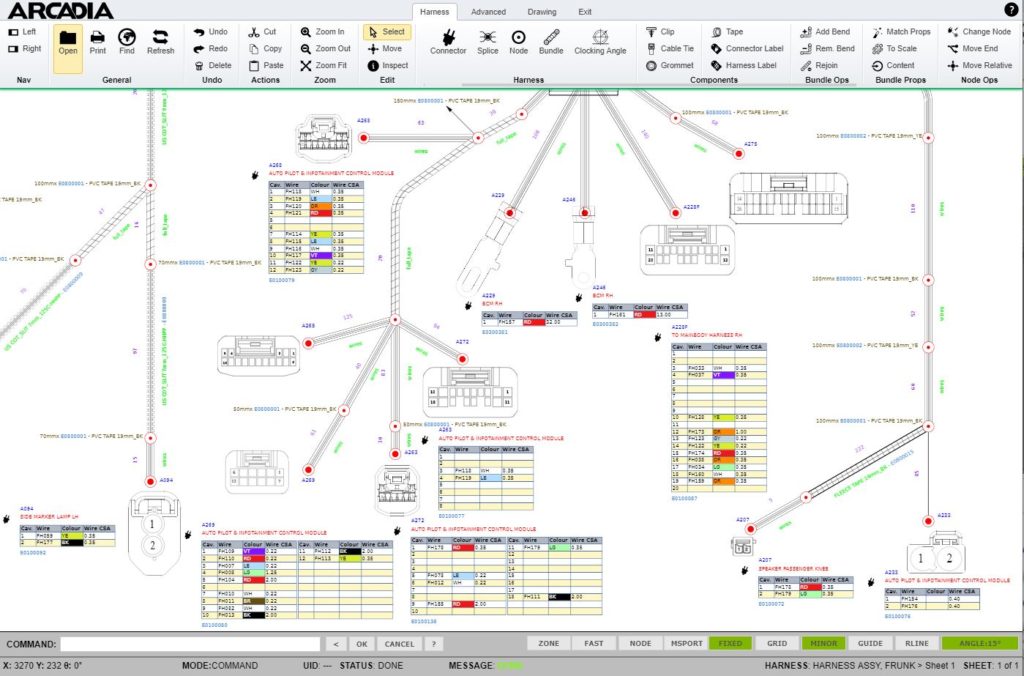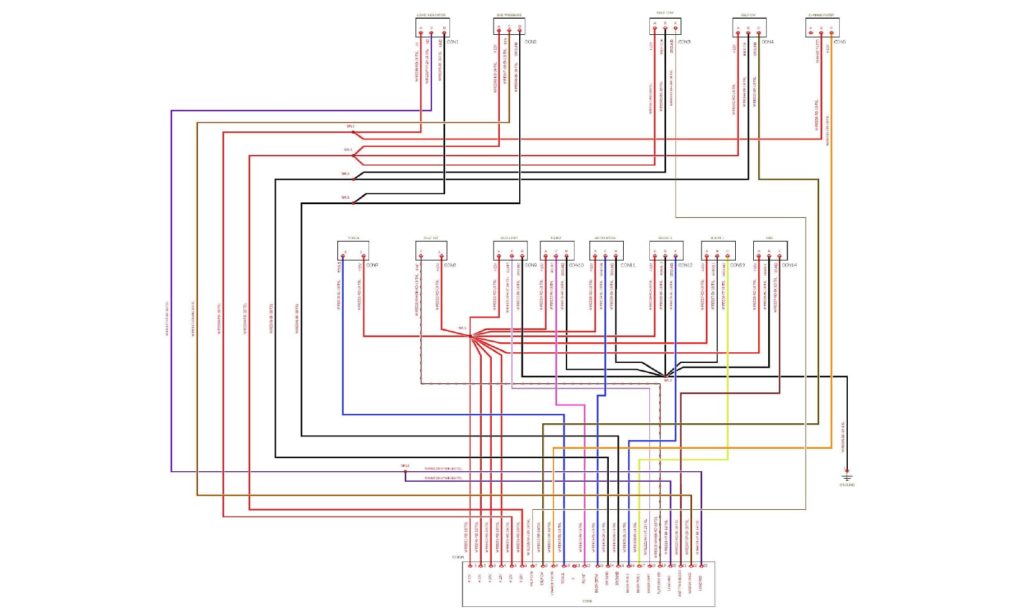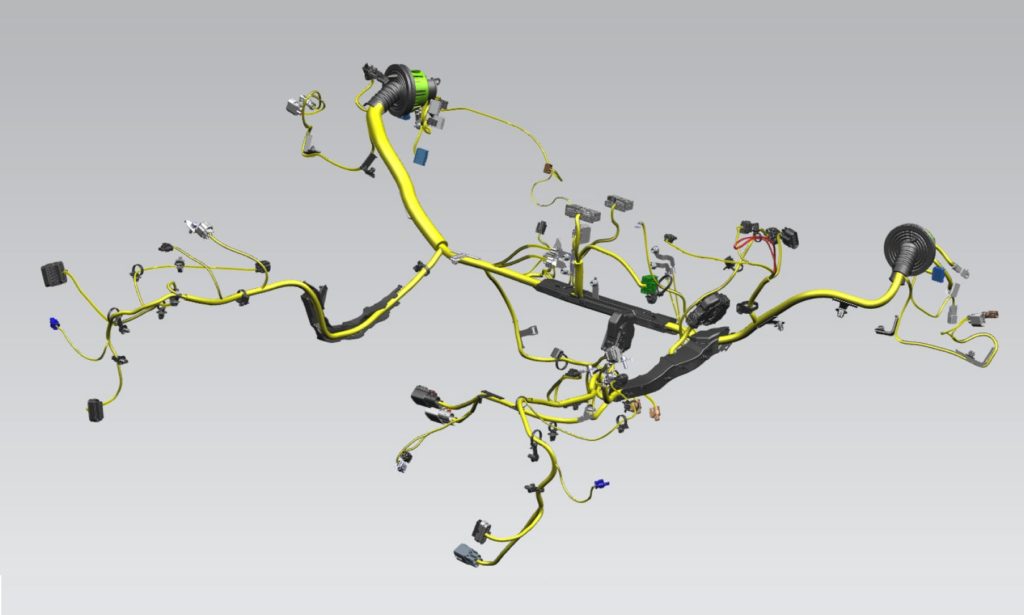ECAD vs. MCAD

ECAD and MCAD: Which to use and how to use them together
When it comes to wire harness design, there are two primary types of software: Electronic Computer-Aided Design (ECAD) and Mechanical Computer-Aided Design (MCAD).
These are essentially two different approaches to designing wire harnesses. ECAD software concentrates on designing the electrical components of a wire harness, such as wiring, connectors, and terminals. MCAD software focuses on designing the physical components of a wire harness. By that, we mean areas such as routing, securing, and packaging.
Therefore, ECAD concerns the electrical connectivity and functionality of a wire harness. For example, you’d use ECAD software for your PCB design.
MCAD, on the other hand, ensures that the physical design of the wire harness meets the desired specifications. This includes weight, size, and durability. In practice, the two approaches are often used together. With ECAD and MCAD software integration, you can create a complete wire-harness design.
A closer look: ECAD software
As an example, we’ll use our own best-in-class suite of ECAD software, Arcadia Wire Harness Design and Arcada Schematic Design. Keep in mind, however, that not all software has the same capabilities as Arcadia’s ECAD suite. This will still give you an idea of how ECADs should work for optimum results.
What is Arcadia Harness Design?
Arcadia Wire Harness operates in the cloud, so you can share your work with team members no matter where they are. It offers a user-friendly interface that simplifies the process of wire-harness design. Its intuitive tools and functions enable engineers to quickly create and modify designs without the need for extensive training. You should demand that at the very least from any ECAD software.

Arcadia Harness Software doesn’t stop there, however. It includes a comprehensive Components Database. The Database holds crucial information regarding the components, including parametric data such as linked terminals, their wire ranges, and linked parts for connectors. This robust tool facilitates the automatic selection of terminals and seals within your designs and ensures proper validation and design rule checks. You can view all connector data live on your screen, eliminating the need to sift through paper catalogs or browse various websites.
Flexible design options lets you create wire harness layouts in not-to-scale and 1:1 formats. Arcadia Harness Design also automatically generates reports, such as Bill of Materials (BOM), wire lists to ensure the correct lengths are used, and other reports based on the design. This saves significant time and minimizes errors associated with manual data entry.
Arcadia enables software integration with enterprise-wide tools & processes. Arcadia Schematic Design ECAD software represents an example.
What is Arcadia Schematic Design?
Arcadia Harness Design and Arcadia Schematic are both ECAD tools, but they serve different purposes in the design process.
With Arcadia Schematic Design, you can create and edit electronic circuit schematics. It’s a graphical representation of the electronic circuit. It shows how the components are connected and how they interact with each other.

Like Arcada Harness Design, it provides a user-friendly interface. More specifically, Arcadia Schematic Design allows engineers to create, edit and manage electronic circuit schematics easily. The tool comes with a library of symbols, footprints, and models, making it easy to quickly build and customize schematics.
Engineers can cross-probe between the schematic and PCB design. You can locate a component in the schematic and highlight it on the PCB layout, making it easy to trace connections and troubleshoot any issues.
Design rule checking (DRC) helps ensure the integrity of the schematic design. These checks include electrical clearance, spacing, and net connectivity, among others. Other features include:
- Hierarchical design: Engineers can create hierarchical designs, which enable the organization of complex circuits into smaller, more manageable blocks. This feature helps to simplify the design process and makes the application easier to understand.
- Real-time collaboration: Multiple designers can work on the same schematic simultaneously. This feature enhances productivity and facilitates teamwork, making it easier to complete designs on time.
- Simulation and analysis: Engineers can simulate and analyze circuits before they’re built. This helps to identify potential problems early in the design process, improving the overall quality of the design and reducing the need for costly rework.
ECAD – MCAD collaboration
As products become more complicated, the need for seamless collaboration between electronic and mechanical design teams becomes more critical. This can be achieved through software integration between ECAD and MCAD.
How to integrate ECAD and MCAD software
Arcadia MCAD Gateway bridges these two domains together to enable integration and communication of design data. Arcadia MCAD Gateway makes software integration possible with your favorite MCAD, such as PTC CREO, Dassault Catia V5 and V6, Dassault Solidworks, Siemens NX, and SolidEdge.
This is called bi-directional integration. Data transfers between the MCAD and Arcadia ECAD software in both directions for a seamless exchange of design information. With this integration, users can import and export mechanical design data, such as 3D models.

This feature enables the transfer of wire and cable routing information from the MCAD to the ECAD. With this capability, you can accurately design the electrical routing and optimize the wire lengths. This ensures that you have enough space for the harness to fit within the mechanical assembly.
Another important feature of Arcadia software: The ability to update 2D manufacturing drawings for MCAD changes. For example, the engineer can update the manufacturing drawings automatically whenever changes are made to the MCAD design. This capability ensures that the manufacturing drawings are always up-to-date with the latest design changes, eliminating the need for manual updates.
Similarly, you can export design data, such as wiring diagrams and harness configurations, from Arcadia ECAD software. You can import it into the MCAD software for use in the mechanical design process.
Overall, the bi-directional integration enabled by Arcadia MCAD Gateway allows for a more efficient and accurate design process. It lets design teams work collaboratively across multiple domains. The result? Engineers minimize errors while improving time to market and the overall quality of the final product.
7-day free trial, always free demo
Arcadia’s suite of cloud-based ECAD software, integrated with MCAD Gateway, can streamline your wire harness design processes. This is how you improve your efficiency and productivity. Try our seven-day free trial now – it’s easy to give our solutions a spin because they work in the cloud.
Don’t forget to ask for a free demonstration. If you want to first see how it works, just give us a call and we’ll set up a demo. If you have any questions, we’re always happy to help.